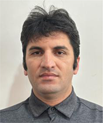Emissions Reduction Visual Presentation R11: Reservoir pressure monitoring via surface deformation inversion: integrating numerical modelling with evolutionary optimisation
Reza Abdollahi A *A

Reza Abdollahi is a PhD student at the University of Adelaide, specialising in the geomechanics of underground storage sites and oil and gas reservoirs. His research primarily explores using deformation data as an indirect method to estimate the intensity of reservoir activities. By analysing surface deformation patterns, he aims to develop predictive models that enhance the monitoring and management of reservoir dynamics, ensuring operational safety and optimising resource extraction. |
Abstract
Emissions Reduction Visual Presentation R11
Reservoir pressure distribution is crucial for optimising extraction, ensuring safety, enhancing recovery and mitigating environmental impacts. However, acquiring detailed distribution of pore pressure data presents challenges. Methods for directly measuring pressure, such as well-tests and bottom-hole gauges, are expensive and offer limited spatial coverage. A practical alternative involves deducing pore pressure from surface displacement observations. This technique utilises a geomechanical forward model to compute deformation based on pore pressure and employs an optimisation algorithm to address the inversion problem’s inherently ill-posed characteristics. While deformation estimation through forward models is well understood, the application of surface displacement data for mapping reservoir pressure remains underexplored. Previous research has applied various approaches – including analytical, semi-analytical and numerical models – in combination with optimisation algorithms. Analytical and semi-analytical techniques often oversimplify reservoir complexities, while advanced numerical methods may require substantial computational resources. Furthermore, these techniques often depend on prior data, which are not always readily available. This research overcomes these limitations by combining advanced numerical modelling with evolutionary algorithms to estimate pressure distribution from tiltmeter data, eliminating the need for pre-existing information. The forward model incorporates a discrete Green matrix, derived by integrating finite element simulations with scripting tools. This matrix captures the interplay between reservoir properties and geometry with the resulting displacement field, enabling efficient deformation analysis under various pressure distributions. By precomputing the Green’s matrix, computational demands are significantly reduced, enhancing the optimisation process. Testing on synthetic data demonstrated the method’s accuracy with a reasonable error.
To access the Visual Presentation click on the link on the right. To read the full paper click here
Keywords: artificial bee colony, discrete Green matrix, evolutionary optimisation, finite element model, genetic algorithm, geomechanics, particle swarm optimisation, reservoir pressure monitoring, surface deformation inversion.
 Reza Abdollahi is a PhD student at the University of Adelaide, specialising in the geomechanics of underground storage sites and oil and gas reservoirs. His research primarily explores using deformation data as an indirect method to estimate the intensity of reservoir activities. By analysing surface deformation patterns, he aims to develop predictive models that enhance the monitoring and management of reservoir dynamics, ensuring operational safety and optimising resource extraction. |


